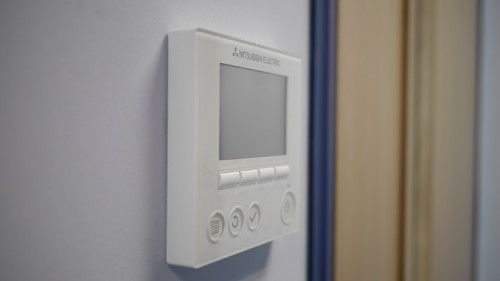
We’ve all experienced colleagues kicking up hell because they’re too hot or too cold. “How can I work in this heat? There’s no air in here…” shrieks the highly strung advertising executive flinging open windows and doors before sailing out to lunch and leaving the rest of the team shivering.
Where one call centre operator may huddle at her desk wearing a thermal hat, gloves and a scarf, her colleague is just as likely be at the opposite end of the floor, frequently opening his window to let the autumn air cool off the sweltering office.
Keeping offices, call centres, showrooms and workshops comfortable for employees is hugely challenging, because ‘comfortable’ means different things to different people.
Women are less well insulated than men, who tend to have a warming layer of muscle, so there are frequently workplace disputes about who the temperature has been set for. With each new season comes a different group of workers not quite happy with how the heating or air conditioning has been programmed. This can lead to complaints, and a distinct sense that the management ‘don’t care about us’. Factor in buildings with uneven heating, air conditioning and ventilation systems, and it’s possible to have one office with several different climates – meaning varying levels of employee satisfaction.
Thermal comfort is a very hot topic
So thermal comfort is rising up the agenda for employers, particularly in workplaces where large numbers of people are working together in a shared space. In an age where ‘employee engagement’ is bandied around as the most important factor in keeping staff happy and productive, can getting the temperature right actually help?
The answer is yes, of course. But you’re going to need specialist help to find out what the ‘right temperature’ is, and heating, air conditioning, and ventilation systems that will be sensitive to your particular building, as well as the changing needs of your staff throughout the calendar year.
There are obvious mistakes to avoid. Having the heating too high in winter might spread a feeling of comfort, but costs are likely to escalate, and there’s evidence that workers become sluggish and less productive. Cooling people right down in the summer can be costly and lead to restlessness and distraction from the job. A study carried out in the US by Cornell University found that keeping people really cool in summer, didn’t increase productivity. Professor Alan Hedge and his team placed monitoring devices on employees’ workstations to measure keystrokes and mouse movements at different temperatures.
“We expected that when you cool people down, they work harder and better,” said Hedge. “We found the exact opposite. When it was cool to colder in the office, people did less work and made more mistakes.”
What is the recommended temperature for offices?
So what temperature should an office be if we are talking ‘happy medium’? A general recommendation is that the temperature be held constant in the range of 21-23°C. In summertime when outdoor temperatures are higher it’s advisable to keep air conditioned offices slightly warmer to minimise the temperature discrepancy between indoors and outdoors.
To overcome the issue of individuals still not feeling comfortable, one solution is to take a poll of attitudes to temperature among staff, and that way, make it clear to all why and how decisions about heating and air conditioning are being made. If over 95% of people are in agreement, then you’re on the right track.
Thankfully the technology around heating, ventilation and air conditioning is now smart enough to individualise workspaces. It’s becoming possible to put ventilation openings around buildings that will better control the airflow, while cooling and heating systems can be accurately matched to building and employee needs.
Maintaining constant thermal conditions in the offices is something well worth pursuing, to promote both cost efficiency and staff happiness. Even minor deviation from comfort may affect your employees’ performance and safety. And what’s certain is that workers already under stress are less tolerant of uncomfortable conditions. If you want to get the best out of your workforce, get their thermal comfort levels right!

